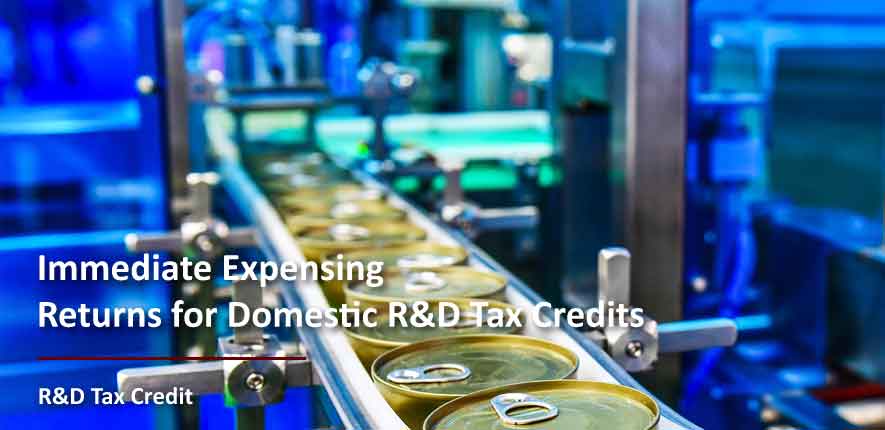
Jul 08, 2025 Immediate Expensing Returns for Domestic R&D Tax Credit
The One Big Beautiful Bill Act (OBBBA) restores same-year deductions for U.S. research costs from tax years starting after December 31, 2024, but keeps 15-year amortization for foreign research. New IRC §174A allows an optional 60-month write-off and treats immediate expensing as an automatic accounting-method change with no §481(a) adjustment needed. Meanwhile, R&D credit claims now require more detailed IRS paperwork, including project-level data on Form 6765. Businesses that haven’t claimed the credit since 2022 should act quickly to benefit from renewed R&D expensing.
Background
§174A lets taxpayers deduct “any domestic research or experimental expenditures” paid or incurred during the year. The old §174 survives but now applies only to foreign research, which must still be amortized over 15 years. These amendments apply to amounts paid or incurred in tax years beginning after December 31, 2024. The statutory changes are as follows:
- Immediate deduction: §174A(a) overrides capitalization rules for domestic R&E spending, allowing for full expensing of R&D costs.
- Retroactive application: Qualified small businesses (under $31 million gross receipts) can apply these changes retroactively for 2022-2024, pending IRS guidance.
- Optional amortization: A taxpayer may elect a ratable deduction over at least 60 months that starts when benefits first arise.
- Accounting-method transition: The change is treated as taxpayer-initiated, consent is automatic, and it is applied on a cut-off basis meaning no §481(a) adjustment.
Practical Impact
Restoring full expensing raises the present-value benefit of R&D outlays by eliminating the five-year delay. Stronger cash flow can support additional headcount and capital purchases, which in turn enlarge the R&D credit opportunity. However, the bifurcation between domestic and foreign research means companies must maintain cost-allocation systems to avoid mixing 15-year foreign amounts with fully deductible domestic costs.
Compliance Reminder for Late Adopters
Many companies that have not claimed the credit since 2021 may be unaware of the new documentation hurdles. The IRS now requires refund claims to identify each business component, describe the research activities performed, and quantify wage, supply and contract costs. The 2025 instructions for Form 6765 introduce Section F (qualified-expense summary) and Section G (business-component detail) that must be completed even on original returns once QREs exceed $1.5 million. The new rules make proactive record-keeping even more critical. It is estimated that less than 3 in 10 qualifying small businesses take advantage of the R&D Tax credit due to perceived complexity.
Immediate Action Items
- Begin preparing project-level detail that matches the three items the IRS requires on amended refund claims.
- Meet with your R&D credit advisor soon to begin preparing for any filings, this process will take some time to ensure compliance with modified amended and timely requirements.
Contact ICS Tax to simplify the process of claiming and maximizing the R&D Credit.


